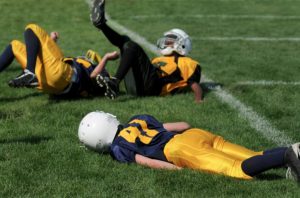
How to Check for a Concussion: A Detailed Guide
Did you know that there are between 1.6-3.8 million sports-related concussions in the United States every year? With this many concussions happening every year it is a good idea to learn how to check for a concussion in case your child or family member ever suffers from one.
Keep reading to learn more about checking for a concussion and what to look out for.
What Is a Concussion?
First, let’s go over what a concussion is. A concussion is also known as a mild traumatic brain injury (MTBI). It can be caused by a jolt, a bump, or a blow that causes the brain to move rapidly inside the skull.
This rapid movement will change how the brain normally functions. A concussion can have a serious long-term health effect even if the bump on the head seems small.
Symptoms of a Concussion
When someone is playing sports and they are suddenly knocked out on the field or have trouble getting back up it is easier to diagnose the concussion. A serious head injury will be much easier to diagnose than a subtle one because this is when a doctor will be able to see obvious signs like bleeding or a fracture.
Sometimes people are not aware that they ever suffered a concussion because of how subtle the injury seemed. Some symptoms of having a head injury include:
- Hard time concentrating
- Difficulty with completing work or homework
- Irritable
- Frequent headaches
- Lethargy
- Dizziness
- Nausea
- Difficulty seeing
Any of the symptoms above can start to show up hours after the initial trauma to the brain. If you notice one or more of the above you want to make sure that you or your loved one are immediately seen by a medical professional to assess your brain.
If the person is indeed bleeding then this will become a medical emergency. The blood will have no place to drain and it will cause a hematoma which will put pressure on the surrounding tissue in the brain. This will end up moving the blood supply to other parts of the brain.
Diagnosis
When it comes to diagnosing a concussion it can be a bit tricky because typically there is no bruising or bleeding in the brain, which would be an identifiable clue. If you think that an MRI (magnetic resonance imaging) or a CT (computer tomography) will help, the reality is that usually, they can’t diagnose a concussion either.
A doctor has to rely on a careful assessment of symptoms and of neuropsychological functions. A doctor can do this assessment on site right after the injury occurs. If it occurs during a sports game then a decision has to be made soon after the injury whether the person can safely return to the game or not.
Testing
Because concussion symptoms can vary so much, testing will require looking at several factors. There is no one simple test to diagnose a concussion and it actually requires several different factors to come into play.
Interview testing for amnesia is one way to test for concussions. A medical professional will test for memory loss or memory lack about what happened before the brain injury occurred. The test will also check for any post-traumatic amnesia or any loss of consciousness.
Post-traumatic amnesia is the memory that is lost after the trauma happens. This is an important test that will tell a doctor the most information about a patient’s prognosis.
Pre-Concussion Testing
When someone wants to play a sport or participate in an activity, it is best to go through pre-concussion testing. This will help everyone know if there are any injuries that can affect the person while they are playing.
Pre-concussion testing will involve tasks that will evaluate a person’s coordination, vision, speed, problem-solving skills, and response time. Once the testing is done the person is given a score that can then be used in the future if the person suffers from a brain injury. The pre-concussion test score can then be used to compare to any tests done afterward.
Healing
The good news is that a person can recover from a concussion. The recovery time will depend on how much damage the person suffered. If the brain areas are not destroyed and only injured then the recovery will be faster. You will have to allow your brain to rest and take things slowly until it is healed.
You won’t be able to rush back into life as you knew it if you want to heal 100%. Your brain tissue will need time to heal and go back to normal. Make sure that you follow your doctor’s orders on how long you have to wait before you engage in physical activities or sports.
Most of the time an injured person can return back to playing sports within a couple of weeks after their concussion. The most common treatment is to relax and rest. If someone returns to their normal daily sports activities it will end up taking the brain a much longer time to heal.
Now You Know How to Check for a Concussion
Hopefully, you feel confident that you know how to check for a concussion with the article above. If you have even the slightest thought that possibly your child, friend, or loved one suffered a concussion seek treatment right away to confirm whether they did or not. It is not good to let a concussion go unnoticed.
Did our blog post help you today? Please come back soon to keep up with our latest helpful posts.


